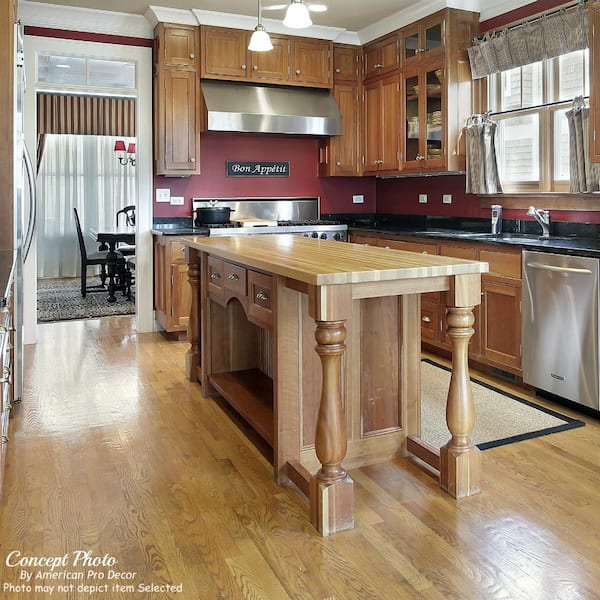Necessary Aspects to Think About When Picking Legs For Cooking Area Island
Selecting the proper legs for a kitchen island involves a careful analysis of numerous elements that can considerably affect both performance and visual charm. As we discover these aspects, it ends up being clear that each choice can have significant ramifications for the general cooking area experience.
Material Options
When choosing legs for a cooking area island, understanding the different product options is necessary for achieving both aesthetic charm and architectural honesty (Legs For Kitchen Island). The choice of product significantly influences not only the longevity of the island but likewise its general layout and capability
Metal legs, frequently made from stainless steel or wrought iron, contribute a commercial and modern-day feeling while making certain durability and security. These products are resistant to wear and can support substantial weight, making them optimal for larger islands.
Another alternative is crafted materials, like MDF or plywood, which can be much more cost-effective while still offering a series of finishes. Nonetheless, they might not supply the same degree of security as solid wood or steel. Lastly, products such as acrylic or glass can develop a contemporary appearance, though they might require added assistance to guarantee security.
Ultimately, the option of material for cooking area island legs must align with the wanted performance and the total style of the kitchen.
Design and Style

When thinking about style, the shape and coating of the legs are important. Tapered legs can provide a sense of lightness and style, while thicker, more robust legs can convey strength and security. In addition, the coating-- be it repainted, tarnished, or all-natural-- must match the cabinets and counter top materials to create a unified look.
Moreover, the layout of the legs can additionally show personal taste. Custom or decorative legs, such as those including complex carvings or distinct geometric shapes, can offer as prime focus, adding character and individuality to the cooking area. Eventually, the best choice will certainly not only enhance capability however also raise the visual appeal, making the kitchen island a standout attribute of the home.
Height Factors To Consider
Choosing the proper elevation for kitchen area island legs is critical, as it directly affects both capability and comfort. The typical height for a kitchen area island typically ranges from 36 to 42 inches, straightening with common counter top elevations.

It is additionally crucial to make up individuals' preferences and heights. Customizing the elevation can guarantee a comfy experience for all relative, making the kitchen area island a much more functional and delightful area.
Weight Assistance
Making sure adequate weight assistance for cooking a knockout post area island legs is crucial for both safety and capability. The kitchen island usually serves numerous purposes, consisting of cooking, dining, and added storage, requiring a durable support framework. When picking legs, it is important to take into consideration the general weight ability required based on the island's planned usage and the materials that will certainly be placed on it.
The option of product for the legs plays a significant function in their weight-bearing capacities. Solid wood, steel, and sturdy composites typically provide exceptional toughness compared to lighter products. In addition, the layout of the legs-- whether they are right, tapered, or have a pedestal form-- can influence their ability to distribute weight properly throughout the structure.
Always speak with the producer's specifications regarding load restrictions to make certain that the legs can sustain the intended weight without compromising safety and security. In recap, selecting kitchen island legs with adequate weight assistance is crucial for developing a risk-free and practical cooking area.
Setup and Maintenance
Correct setup and maintenance of kitchen island legs are essential for making sure durability and stability. next page To start, it is important to comply with the manufacturer's standards during installation. This usually includes securing published here the legs to the space station using appropriate bolts, making sure that the legs are level and straightened. Utilizing a degree tool can aid avoid tottering and improve the overall visual charm of the cooking area island.
As soon as set up, normal maintenance is needed to maintain the stability and look of the legs - Legs For Kitchen Island. For wooden legs, regular cleansing with a damp fabric and application of ideal wood polish can protect against moisture damage and keep their finish. Metal legs might call for a gentle cleaning option to remove grease and gunk, adhered to by a completely dry cloth to stop rust formation
Furthermore, check the legs consistently for signs of wear or damage, such as cracks or loose joints. Tightening screws or bolts as required can likewise extend the life-span of the legs. By sticking to these setup and upkeep methods, house owners can guarantee that their kitchen area island stays durable and visually appealing for many years to find.
Final Thought

Aesthetic coherence is vital in picking the design and layout of legs for a kitchen island, as these elements considerably affect the total setting of the room. Conical legs can provide a sense of lightness and beauty, while thicker, a lot more durable legs can share toughness and security.Picking the ideal elevation for cooking area island legs is crucial, as it directly influences both capability and convenience. In recap, selecting kitchen island legs with adequate weight assistance is essential for developing a secure and useful cooking area.
In final thought, selecting legs for a kitchen island requires cautious consideration of various elements, including product alternatives, design, height, weight support, and installment.